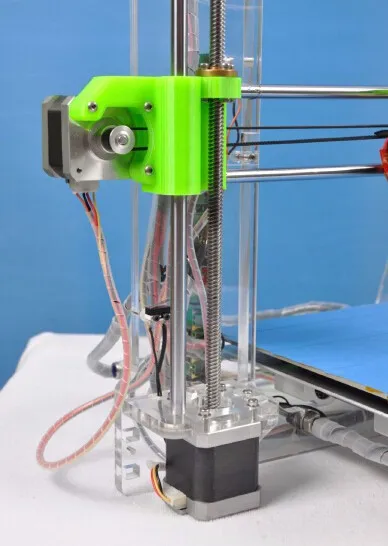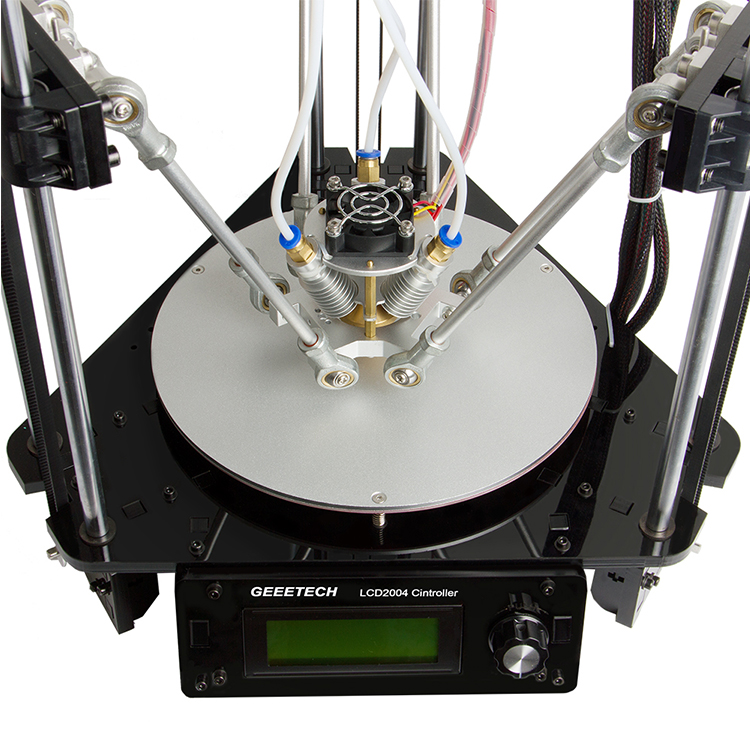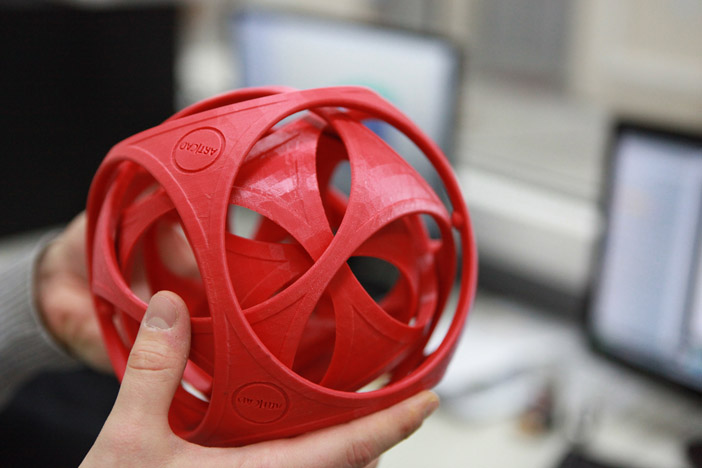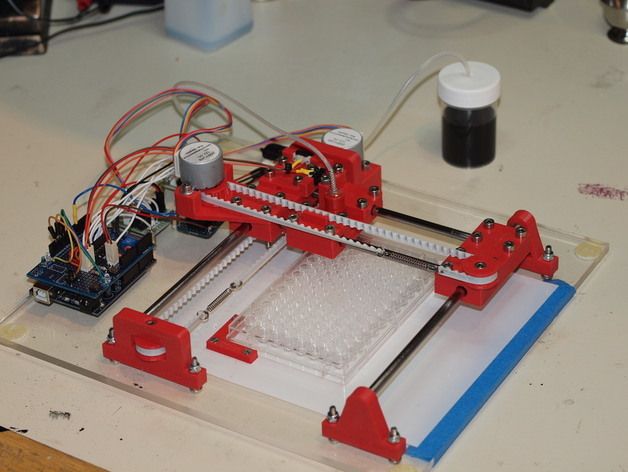Carleton 3d printer
Teaching with 3D printed terrain models
Wednesday 1:30pm-4:00pm Appleby 3
Afternoon Mini Workshop
Convener
Chris Harding, Iowa State University
This workshop will touch on the main aspects of how to integrate 3D terrain models into your teaching. I will talk about 3D printing hardware (especially of low-cost 3D printers) and the best software to use to create 3D models (https://touchterrain.org). I will showcase several large (400 x 400 mm) 3D terrain prints and show how they have been used in geoscience education. Finally, we will collectively brainstorm possible approaches towards developing lesson plans with 3D printed terrain models for your class room or field trip.
Goals
By the end of this workshop, participants will:
- Know the basics of how plastic filament 3D printing works and what's involved in owning your own 3D printer
- Be able to generate a 3D printable model of any terrain worldwide using the opensource TouchTerrain web application
- Have gained hands-on experience with many different, large 3D printed terrain models
- Have developed and initial plan for how to incorporate 3D terrain prints into their own teaching
If at all possible bring a laptop with an internet connection, so you can run the TouchTerrain web app.
Program
1:30 Welcome and introductions (Who are you, what do you teach, what do you hope to get out of this workshop?)
1:40 Introduction to 3D filament based printing technology (incl. live demonstration)
1:55 Detailed walk through on how to use the TouchTerrain web app to create high-resolution (and free) terrain models
(Participants with laptops are encouraged to follow along!)
2:15 Break
2:25 Quick look at live 3D printing
2:30 Look at examples of large (400 x 400 mm) 3D printed terrain models I have created of the last years
(includes giving away some terrain models!)
2:50 Examples of teaching with 3D printed terrain (geology curriculum), some using the 3D printed models shown earlier
3:05 Break
3:15 Participants develop ideas for how to incorporate 3D terrain prints into their own teaching
- Split into 3 - 5 groups, guided be similar backgrounds and/or teaching interests
- Brainstorm possible applications for teaching: didactic purpose, setting, area/data needed, limitations (20 min)
- Quick presentation to the whole group, consider technical (3d printing) requirements and practical feasibility
- Closing thoughts
3:55 Fill out workshop evaluations
4:00 Adjourn
Resources
- TouchTerrain - 3D Printable Terrain Models, Intern.
 Journal of Geo-Information, Feb. 2021
Journal of Geo-Information, Feb. 2021 - ESRI Story map companion to the paper
- TouchTerrain project on Github (Docker version)
- Program and worksheet.pdf (Acrobat (PDF) 426kB Jul19 22)
- Intro to 3D printing.pdf (Acrobat (PDF) 358kB Jul19 22)
- Working with TouchTerrain web app.pdf (Acrobat (PDF) 910kB Jul19 22)
- Develop your own ideas.pdf (Acrobat (PDF) 831kB Jul19 22)
- Education exercise examples.pdf (Acrobat (PDF) 1.9MB Jul19 22)
« View More Afternoon Mini Workshops
- Course Resources
- Professional Development for Undergrads, Grads and Faculty
- Student Learning
« Previous Page Next Page »
3D Printed Bike Snaps in Half During Carleton University Press Conference to Show it Off - 3DPrint.com
The process of developing new technological solutions is fraught with many perils and, aside from the hurdles to overcome on the way to a better tomorrow, the day comes when the developers must demonstrate the New Way Forward for the assembled members of the press.
Those demonstrations and press conferences don’t always go as planned.
The latest victims of the Press Conference Finagle’s Corollary to Murphy’s Law moment are a group of second-year engineering students at Carleton University who called a presser to demonstrate the awesome that was their 3D printed bicycle.
So it was that, at the appointed hour, James Nugent, Michael Mackay-MacLaren, and Gabriel Wong stood before the local press to show off their high-tech bicycle constructed of parts built on a 3D printer.
If you’re unfamiliar with Finagle’s Corollary, it’s essentially “Anything that can go wrong, will – at the worst possible moment,” and the Carlton students discovered that to their horror and the mirth of the Fourth Estate.
The plan involved having Wong mount the cutting edge bike and give it a bit of a spin around the room. He would then accept the kudos due to him and his team once the ride had sufficiently stunned the press on hand. But it seems one element of the product development process for the bike had been overlooked; a test ride, and that led to what can only be called an “awkward moment” for the trio — and disaster for their bicycle.
As Wong strapped on a helmet and took the saddle in preparation for his historic and locomotive victory lap, the bike snapped at the head tube. And a bicycle needs a head tube. It needs one very much.
Photo courtesy The Ottawa Citizen
Nugent and Mackay-MacLaren were, for the most part, undeterred by the event and went on to tell the press that a relatively critical part had been printed hollow and not solid as planned, and that proved unfortunate.
“We performed a weight test in which subjected the frame to a large deformation. Nonetheless, the bike was able to withstand 120 lbs of force. The front wheel was the main cause of the frame deformation as it moved forward a few inches during the weight test,” Nugent and Mackay-MacLaren now say of their moment under the lights. “With the frame being tested we now had to examine the wreckage to identify the failure methods. As engineers we take failure as the optimal change to refine and redesign any flaws we find in our original design.
In the near future we will be testing again with the hope of finishing before the looping makes us too dizzy to think.”
Now that the Carleton team has returned to the drawing board, which will presumably include a tick box clearly marked “Test Ride Bicycle” this time around, all will turn out well in the end.
“Once we had attached wheels and a seat, we were ready to sit on the final product to see if it could withstand the weight of a person,” they say. “Ignoring the known weaknesses, like the part where the printer had run out of plastic and not finished the print or the one with a small crack, we decided to go for it.”
Have you ever experienced a moment like this in your time as a product designer or student? Let us know in the 3D Printed Bike forum thread on 3DPB.com. Check out the video below from the press event and watch the 3D printed bike snap with your own eyes..
[Source: Ottawa Citizen]
Stay up-to-date on all the latest news from the 3D printing industry and receive information and offers from third party vendors.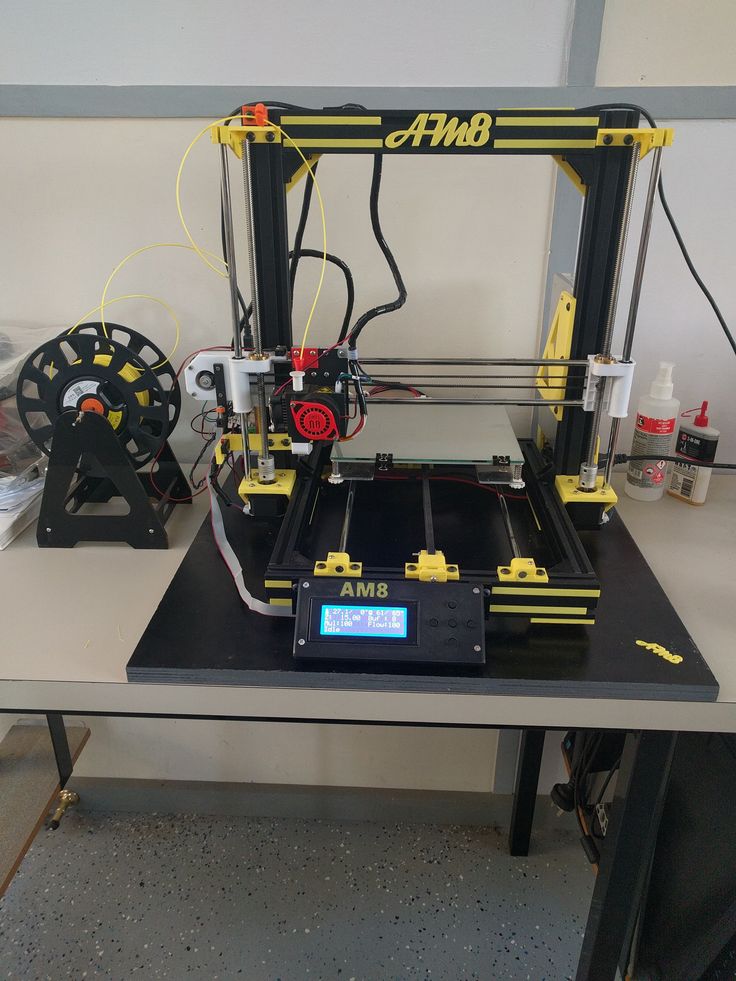
Tagged with: 3d print failure • 3d printed bicycle • 3d printed bike • 3d printing fail • bicycle design • Carleton University • Gabriel Wong • James Nugent • Michael Mackay-MacLaren
Please enable JavaScript to view the comments powered by Disqus.
3D printers in education: the coming future / Newtonew:
network education newsWe are in social networks:
- Articles
- Author's columns
- Collections
- News
- Events
To write an article
12+
return Reading time: 5 minutes | No comments
Save
3D printing technology allows you to turn any digital image into a three-dimensional physical object that can be reproduced "at home". If you think about it, over time, these technologies should radically change the behavior of the average user: instead of passively consuming what mass production of items gives him, he can create the items he needs on his own and exactly in the form in which they completely satisfy him. The material world that surrounds a person has every chance of becoming unique and author's, and someday Ikea furniture in every home will become a thing of the past. Just like similar cars.
If you think about it, over time, these technologies should radically change the behavior of the average user: instead of passively consuming what mass production of items gives him, he can create the items he needs on his own and exactly in the form in which they completely satisfy him. The material world that surrounds a person has every chance of becoming unique and author's, and someday Ikea furniture in every home will become a thing of the past. Just like similar cars.
The body of the EDAG Light Cocoon, shown at the Geneva Motor Show in March this year, is “printed” on a 3D printer
Actually, 3D printing is not a new technology. Its history began about 20 years ago in the United States, when the process of layer-by-layer creation of three-dimensional objects from photopolymerizable composite materials was invented. The technology is called stereolithography (SLA). A little later, volumetric models learned to form from layers of various materials. Then other 3D printing methods appeared, but they were used mainly in industrial and highly specialized production, and all this was called prototyping.
The technology is called stereolithography (SLA). A little later, volumetric models learned to form from layers of various materials. Then other 3D printing methods appeared, but they were used mainly in industrial and highly specialized production, and all this was called prototyping.
Fused Deposition Modeling (FDM) was invented in the late 1980s, and already in 1995, the concepts of "3D printer" and "3D printing" appeared. The fact is that it was this method that made it possible to use rapid prototyping at home: devices of a relatively small size appeared, which thus created models from a polymer thread.
The use of 3D printers "pulls" a whole string of necessary knowledge in modeling, physics, mathematics, and programming. 3D printing is a powerful educational tool that can instill in a child the habit of not only using ready-made, but creating for themselves.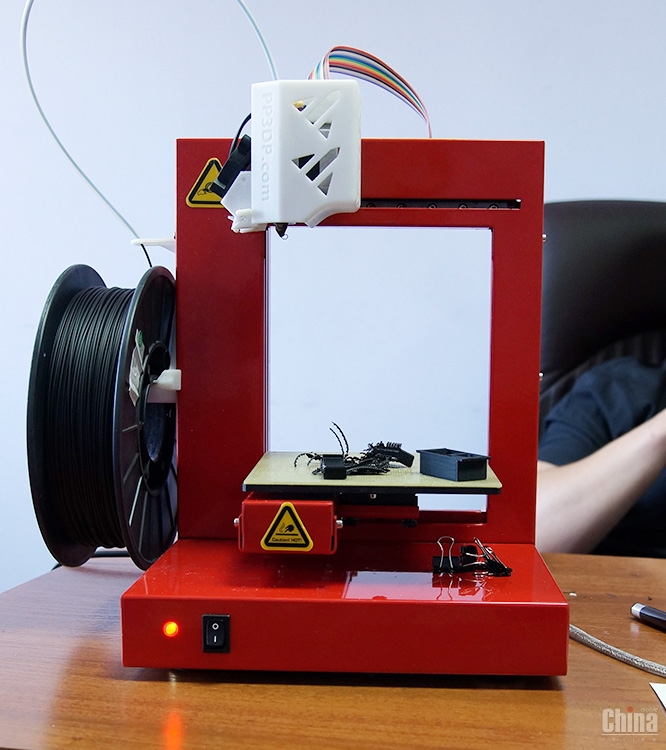 Here are the two main benefits that education has from the advent of new technology:
Here are the two main benefits that education has from the advent of new technology:
- now the teacher himself creates three-dimensional visual aids, without which it is difficult to understand the material;
- 3D printers put learning into practice: students can create prototypes and necessary parts on their own, embodying their design and construction ideas.
“When you are proud that you created something yourself, you don’t have a question: why study?” — says Sean Carlton, science teacher at New Technology High School (Napa, California)
We do not undertake to predict when a 3D printer in a Russian school will become the same familiar tool as a computer or an interactive whiteboard. At this stage, examples of the introduction of this technology are rare, and the figures of additional education are more enthusiastic.
For example, the only 3D printer at the time of this video in educational institutions of the Tyumen region was donated to the "School of the Gifted" mug at Tyumen State University.
Astrakhan schoolchildren use 3D printing at the Regional School Technopark of the Astrakhan Civil Engineering Institute. This organization works with schools in the Astrakhan region, and children who are passionate about technology have a chance to get involved in high technology by working on group projects in robotics and design.
Source: pixabay.com
Pioneers in introducing children and adults to 3D printing - hackspaces (hackerspace), special creative spaces for those who are passionate about high technologies: electronics, IT, robots, etc. There are such spaces in Moscow, St. Petersburg, Kazan, Yekaterinburg. So, in Yekaterinburg, there was even a school techno-marathon for assembling 3D printers, organized by the MakeItLab hackspace. Such a marathon perfectly proves to both children and their teachers that technology that seems like a fairy tale to many, in fact, can be mastered by everyone.
Petersburg, Kazan, Yekaterinburg. So, in Yekaterinburg, there was even a school techno-marathon for assembling 3D printers, organized by the MakeItLab hackspace. Such a marathon perfectly proves to both children and their teachers that technology that seems like a fairy tale to many, in fact, can be mastered by everyone.
Using a 3D printer, you can "print" the world of Minecraft
Source: carl.jalbum.net
The Ekaterinburg marathon was attended by copies of the Spanish Prusa I3 printer, designed for assembly at home. Astrakhan engineers, teachers of the technopark mentioned above, went further and developed their own printer for self-assembly, which should cost schools much cheaper than existing analogues. And teacher of Tomsk State University Nikolai Bulakhov announced this summer that he would soon create an online course on assembling a 3D printer from improvised materials.
As you can see, the technical problem of accessibility of 3D printing for schools is being actively solved: people are eager to use up-to-date technologies, despite some inertia of the education system. But methodological issues will not only be addressed by technical enthusiasts.
But methodological issues will not only be addressed by technical enthusiasts.
3D printing at school allows for the development of interdisciplinary connections, requires more time for independent creative work, and opens up great opportunities for project-based learning. This is another case where the introduction of new technology is ineffective without systemic changes.
13 August 2015, 15:00
technology
Found a typo? Select the fragment and press Ctrl+Enter.
related articles
school of technology
3D simulators for school
technology
Magic Leap - a breakthrough augmented reality technology
technology
3D: how, why and why
Selected text:
Message:
Error message sent successfully, thank you for your help!
– Education as a Lifestyle
Send your columns
and offers
You have an interesting news or material from the field of education or popular science?
Tell us!
[email protected]
© 2014-2022 Newtonew. 12+
12+
Education media project, dedicated to the most relevant and useful concepts, theories and methods, technologies and research, products and services. We talk about how they develop and change education and science.
Copying of materials is only possible with the permission of the Newtonew editors.
USE special project ProTeachers
MOOC 2016 Large Variable
Physics: Lightning
Route to the Future
Few Years
21st Century Education
We use cookies to improve user experience. You can find more details in our user agreement.
App Store Google Play
Subscribe to the newsletter
Subscribe to the newsletter
Authorization on the site
Login via social networks:
VKontakte Facebook Google
New user
Enter your email:
Enter password:
Repeat password:
back
Remind password
Enter the email you registered with:
back
Password sent
We have sent your login password to the specified email address.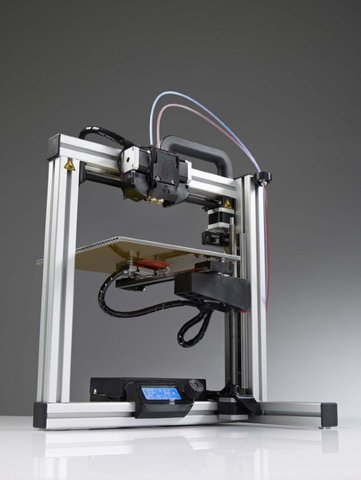
Do not forget that you can log in to the system through social networks. If during registration in social networks you indicated the same email as on our website, then after authorization you will be taken to your profile.
Login via social networks:
VKontakte Facebook Google
Confirm registration
An email with a link has been sent to the specified e-mail. Please follow the link to confirm.
Login via social networks:
VKontakte Facebook Google
Registration confirmed
You have successfully registered
London Fashion Week coincided with the Queen's funeral. How half-naked models were released on the catwalk during the days of universal mourning During the funeral of Queen Elizabeth II, the designers canceled shows, and in previous days they paid tribute to the memory of their monarch.
 Show S.S. Daley opened the catwalk with candles, and one of the images of JW Anderson repeated the black posters thanking Elizabeth, posted throughout the city. The flowers have proven to be part of many collections, some even recreating the Queen's famous costumes. Despite the sad event, fashion designers still decided to show the public and provocative images. As before, models in “naked” dresses walked the catwalks, and the streets of the British capital were flooded with stars and bloggers in outrageous skimpy clothes. How the industry said goodbye to Elizabeth II and what the most daring participants of the Fashion Week showed in the Lenty.ru gallery.
Show S.S. Daley opened the catwalk with candles, and one of the images of JW Anderson repeated the black posters thanking Elizabeth, posted throughout the city. The flowers have proven to be part of many collections, some even recreating the Queen's famous costumes. Despite the sad event, fashion designers still decided to show the public and provocative images. As before, models in “naked” dresses walked the catwalks, and the streets of the British capital were flooded with stars and bloggers in outrageous skimpy clothes. How the industry said goodbye to Elizabeth II and what the most daring participants of the Fashion Week showed in the Lenty.ru gallery. Photo: Lia Toby / BFC / Getty Images
Turkish-British designer Dilara Findikoglu's show featured corsets and lace trains alongside Cradle of Filth T-shirts and skimpy outfits. One of the models walked down the catwalk in a dress made of transparent fabric, while the intimate parts of her body were covered with long curls, and bright red lipstick smeared over her face became the accent of the image.
Findikoglu draws inspiration from subcultures, including punk and goth, and also translates her own views on religion, politics and feminism through her work. “One part of the collection is dedicated to innocence and the body and reflects how I got rid of my childhood traumas and became free,” the fashion designer explained.
Photo: Nick England / BFC / Getty Images
Backstage at the KWK show, created by Chinese designer Kay Kwok, paparazzi filmed the process of dressing the fashion model. The assistants gave him metal buttock pads in combination with a blue trouser suit with a cutout at the back of the pants. He completed his look with matching eyebrows and chunky white square-toed shoes.
Photo: Christian Vierig / Getty Images
Demonstrating feminine confidence through revealing outfits is a trend that designers seek to promote both on the catwalk and in street fashion. The guest of London Fashion Week posed for photographers in a scarlet dress with a U-shaped neckline, the transparent fabric of which revealed her lace underwear.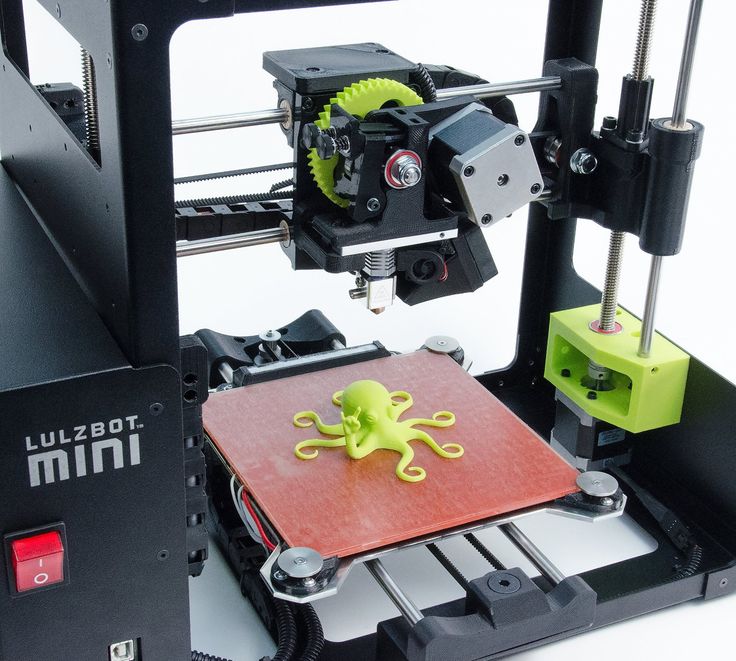 This model was presented by Francesca Capper and Natasha Somerville, who founded the women's clothing brand Poster Girl in 2017. As the designers note, their brand focuses on the inner confidence of the modern woman. Poster Girl outfits are worn by singer Dua Lipa, models Kylie Jenner and Megan Fox, businesswoman Paris Hilton, and pop singer Selena Gomez.
This model was presented by Francesca Capper and Natasha Somerville, who founded the women's clothing brand Poster Girl in 2017. As the designers note, their brand focuses on the inner confidence of the modern woman. Poster Girl outfits are worn by singer Dua Lipa, models Kylie Jenner and Megan Fox, businesswoman Paris Hilton, and pop singer Selena Gomez.
Photo: Shane Anthony Sinclair / BFC / Getty Images
Designer Leo Carlton said of his show: "The show will be like a circle of witches because I have a pagan background." The fashion designer combined the motives of nature and modern technologies in his work. He worked on the collection in a workshop built on his father's farm in Oxfordshire, England. At the same time, when creating the line, Carlton used a virtual reality headset, 3D body scanning and a 3D printer, using corn starch, crushed oyster shells and coffee grounds to print products.
One of the fashion models appeared in an outfit made of ropes braiding her figure. The intimate parts of the body, as well as the face, hands and feet were covered with mother-of-pearl plates, and the head was decorated with curls of small white links.
The intimate parts of the body, as well as the face, hands and feet were covered with mother-of-pearl plates, and the head was decorated with curls of small white links.
Photo: Nick England / BFC / Getty Images
Showy underwear has become a trend this fall, as once again confirmed by the work of fashion designer Naim Anthony and his brand Helen Anthony. The fashion model appeared on the catwalk in black flared trousers that did not cover her shorts with a high waist. The bra was also visible because of the transparent top with a train.
In his work, Anthony strives to combine Eastern and Western fashion. In this way, he tries to show that the 21st century is a kind of melting pot of cultures, languages, ideas and ethnic groups.
Photo: Luke Walker / BFC / Getty Images
The Edward Crutchley brand show, featuring men, women and non-binary people, was titled "The only constant thing in life is change." When creating his line, designer Edward Crutchley was inspired by Greek mythology, club aesthetics 1990s and queer culture. One of his fashion models showed an athletic physique, reminiscent of antique statues, which was combined with a conditionally feminine outfit. He appeared before the cameras in shorts and a chest-opening crop top, decorated with pink sequins, ruffles and rhinestones.
One of his fashion models showed an athletic physique, reminiscent of antique statues, which was combined with a conditionally feminine outfit. He appeared before the cameras in shorts and a chest-opening crop top, decorated with pink sequins, ruffles and rhinestones.
Photo: David M. Benett / Dave Benett / Getty Images
Greek Cypriot model Sophia Hadjipanteli, famous for her thick black unibrow, attended the Mark Fast fashion show in a trendy skimpy outfit. The girl chose a translucent lace jumpsuit with a collar, which she combined with black shorts with a high waist. She completed the look with high boots with lacing and a leather jacket. The latter was especially popular in 1990s and again returned to fashion.
Photo: Shane Anthony Sinclair / BFC / Getty Images
The 28-year-old founder of menswear brand Harri Harikrishnan Kejathil Surendran Pillai, hailing from a small village in Kerala, is one of the few designers to represent India at Fashion Week. Attention at his show was attracted by fashion models in inflatable balloon trousers of an intricate shape.
Attention at his show was attracted by fashion models in inflatable balloon trousers of an intricate shape.
“Originally the idea for these pants came from the funny idea of visualizing me based on my dog's perception. How does he see me? Do I look like a giant figure with big feet and a small head?” - explained the couturier. The clothes featured are made from latex, which the designer says allowed him to create complex silhouettes.
Photo: David M. Benett / Dave Benett / Getty Images
Stylist Maikisha Nelson embraced the nudity trend with a see-through bodysuit that showed her bust. She combined this piece of clothing with a fur jacket and skirt, adding white ankle boots on a massive platform and leggings in the form of fabric falling from the knees to the image.
In this form, the girl attended the show of Dreaming Eli, created by the Italian designer Elisa Trombatore. Through her work, the latter hopes to empower women.
Photo: Lia Toby / BFC / Getty Images
London-based brand Ruirui Deng's collection was inspired by fairy tales and medieval legends, including the legend of King Arthur and the Knights of the Round Table. For this reason, the line of the brand contains references to knightly armor and mystical creatures. So, one of the models at the brand show showed an outfit consisting of a maxi-length skirt and a crop top, to which knitted animal figures were attached in the chest area, reminiscent of illustrations from medieval books.
For this reason, the line of the brand contains references to knightly armor and mystical creatures. So, one of the models at the brand show showed an outfit consisting of a maxi-length skirt and a crop top, to which knitted animal figures were attached in the chest area, reminiscent of illustrations from medieval books.
Photo: David M. Benett / Dave Benett / Getty Images
British drag queen George Boyle, better known by his stage name A'Whora, was one of the guests at designer Christopher Kane's fashion show. For the event, the artist chose a black and green T-shirt, decorated with wide shoulders and a leather belt, as well as yellow mini shorts. He complemented his extravagant outfit with nylon stockings, glasses with yellow lenses, gloves above the elbow and boots with extremely high soles. In addition, the stylists gave Boyle a careless styling, and the makeup artists highlighted his eyebrows with green shadows and outlined the contour of his lips with a brown pencil.
Photo: Joe Maher / Getty Images for POSTER GIRL
American models, designers and TV presenters Shannon and Shanneid Clermont, also known as the Clermont twins, decided to emphasize their similarities with identical outfits. The sisters attended the show of the Poster Girl brand in tight jumpsuits with hoods and transparent inserts, refusing bras. As accessories, the girls chose glasses, white belts and small bags.
Photo: Mike Marsland / WireImage / Getty Images
Inspired by underground club vibes and the aesthetic of 1980s fitness videos, Mark Fast unveiled a collection of party wear. On the catwalk, you could see hybrid sneakers with heels, as well as colorful denim overalls. Particularly noteworthy is the model, who paraded in a neon green mini-length dress, decorated with slits on the sides and a round neckline on the chest. According to the fashion editors of British Vogue magazine, the fashion model, whose make-up resembled the image of the heroes of the film "Avatar", tried her best to keep the bottom of the dress from rising above the top of the thigh. “Fast did what he does best, namely, dresses for the brave,” the experts noted.
“Fast did what he does best, namely, dresses for the brave,” the experts noted.
Photo: Tim Whitby / BFC / Getty Images
In the new season, South Korean fashion designer Regina Phe presented a collection of clothes created with the needs, occupations and desires of women in mind. Inspired by a quote by Russian writer Leo Tolstoy: “You can live great in this world if you know how to work and love,” the fashion designer explored the roles of love and work in the lives of modern women. At the same time, she took into account their femininity, individuality, self-confidence and desire to express themselves freely. Girls of different professions took part in the Phe defile. Among them were directors, jewelers and journalists. Models demonstrated both strict leather trench coats and more daring outfits, such as dresses, the transparent fabric of which revealed naked parts of the body.
Photo: Tim Whitby / BFC / Getty Images
Irish designer Jonathan Anderson's show, unlike that of his colleagues, was restrained.


